-
 Bitcoin
Bitcoin $84,022.8967
2.34% -
 Ethereum
Ethereum $1,868.2838
2.77% -
 Tether USDt
Tether USDt $0.9999
0.00% -
 XRP
XRP $2.1453
3.05% -
 BNB
BNB $612.3358
2.78% -
 Solana
Solana $127.4412
2.71% -
 USDC
USDC $1.0001
-0.01% -
 Dogecoin
Dogecoin $0.1711
4.68% -
 Cardano
Cardano $0.6759
4.88% -
 TRON
TRON $0.2353
0.73% -
 Toncoin
Toncoin $4.0848
3.73% -
 Chainlink
Chainlink $14.0148
6.01% -
 UNUS SED LEO
UNUS SED LEO $9.3543
2.85% -
 Stellar
Stellar $0.2731
3.21% -
 Avalanche
Avalanche $19.4355
4.38% -
 Sui
Sui $2.3857
7.83% -
 Shiba Inu
Shiba Inu $0.0...01278
5.25% -
 Hedera
Hedera $0.1688
5.17% -
 Polkadot
Polkadot $4.1925
4.20% -
 Litecoin
Litecoin $84.6282
3.00% -
 MANTRA
MANTRA $6.3356
0.81% -
 Bitcoin Cash
Bitcoin Cash $312.8725
4.70% -
 Bitget Token
Bitget Token $4.6137
4.16% -
 Dai
Dai $0.9999
0.00% -
 Ethena USDe
Ethena USDe $0.9998
-0.03% -
 Pi
Pi $0.6993
0.19% -
 Hyperliquid
Hyperliquid $13.5365
7.54% -
 Monero
Monero $217.9467
1.18% -
 Uniswap
Uniswap $6.1376
4.34% -
 Aptos
Aptos $5.3585
3.13%
Building a Low-Cost, High-Return GPU Mining Machine
Building a budget-friendly crypto mining rig involves selecting efficient GPUs, a multi-GPU motherboard, and a high-quality PSU, while prioritizing cooling and power optimization.
Mar 30, 2025 at 12:07 pm
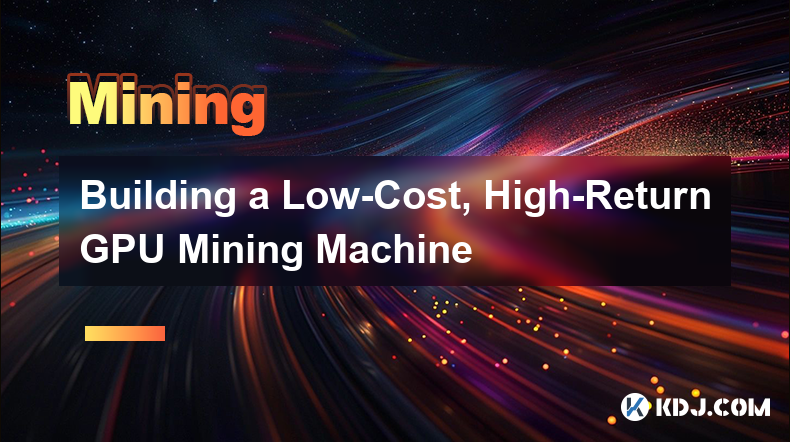
Building a profitable cryptocurrency mining rig on a budget requires careful planning and execution. This involves selecting the right components, optimizing power consumption, and understanding the fluctuating nature of cryptocurrency mining profitability. Let's delve into the specifics of constructing such a machine.
Choosing the Right GPU: The Heart of Your Mining Rig
The Graphics Processing Unit (GPU) is the core component for cryptocurrency mining. Choosing the right GPU balances performance and cost. Prioritize GPUs with high hash rates and reasonable power consumption. Used GPUs can offer significant cost savings, but thoroughly inspect them for damage or signs of excessive wear before purchasing. Consider the mining algorithm you intend to use, as certain GPUs perform better on specific algorithms. Research current market prices and compare specifications before making a purchase.
Motherboards: The Foundation of Your System
The motherboard must support multiple GPUs. Look for motherboards with ample PCIe slots to accommodate your chosen GPUs. Consider the motherboard's chipset, ensuring it's compatible with your chosen CPU and RAM. While higher-end motherboards offer more features, a budget-friendly option will suffice if it meets your GPU requirements. Check reviews to ensure the motherboard is stable and reliable under heavy load.
CPUs: The Brain of the Operation
The CPU's role in mining is less critical than the GPU. A relatively inexpensive CPU with sufficient cores for managing multiple GPUs will suffice. Avoid overspending on a high-end CPU, as the GPUs will handle the bulk of the computational work. Focus on compatibility with your motherboard and chosen RAM. A used CPU can significantly reduce your initial investment.
RAM: Memory Management
The amount of RAM needed depends on the operating system and the number of GPUs. 8GB of RAM is generally sufficient for a basic mining setup, but more might be necessary for complex setups or operating systems with higher memory requirements. Choose a speed that's compatible with your motherboard and CPU. Focus on reliability and stability rather than speed for this component.
Power Supply Unit (PSU): Powering Your Rig
The PSU is crucial. Underestimating power requirements is a common mistake. Calculate the total power draw of all your components, including GPUs, motherboard, CPU, and peripherals, and add a significant margin for safety. A high-quality PSU with sufficient wattage is essential for stability and longevity. A modular PSU can help manage cable clutter and improve airflow.
Chassis: Housing Your Components
The chassis should accommodate your chosen components and provide adequate cooling. Prioritize airflow to prevent overheating. A larger chassis with multiple fan mounts will generally offer better cooling than a smaller, more compact case. Consider the size and weight of your components when selecting a chassis to ensure a proper fit.
Cooling: Keeping Your Rig Cool
Efficient cooling is paramount to prevent overheating and maintain stable hash rates. Consider using additional fans within the chassis, especially if using high-power GPUs. Monitor GPU temperatures closely and adjust fan speeds as needed. If necessary, invest in aftermarket GPU coolers to improve thermal performance. Proper cooling significantly impacts longevity and mining efficiency.
Operating System & Mining Software
Choose a lightweight operating system like Linux for optimal performance. Configure your mining software to maximize efficiency and monitor your rig's performance. Familiarize yourself with the software's settings to optimize your hash rate and power consumption. Regularly update your mining software to benefit from bug fixes and performance improvements.
Assembling Your Mining Rig: A Step-by-Step Guide
- Prepare your workspace: Ensure a clean and well-lit area. Anti-static precautions are recommended.
- Install the CPU and RAM: Carefully install these components into the motherboard.
- Mount the motherboard: Securely mount the motherboard into the chassis.
- Install the PSU: Connect the PSU to the motherboard and other components.
- Install the GPUs: Carefully install the GPUs into the PCIe slots.
- Connect the drives: Install any necessary storage drives.
- Cable management: Neatly manage all cables to improve airflow.
- Install the OS and mining software: Install your chosen operating system and mining software.
- Test and monitor: Test the rig's stability and monitor temperatures and hash rates.
Frequently Asked Questions
Q: What is the most profitable cryptocurrency to mine?
A: Profitability depends on several factors, including the cryptocurrency's price, difficulty, and your hardware's hash rate. There's no single "most profitable" coin; research is crucial.
Q: How much does it cost to build a low-cost GPU mining rig?
A: Costs vary significantly depending on the components chosen. A basic setup can range from a few hundred to several thousand dollars.
Q: How much electricity will my mining rig consume?
A: Power consumption depends heavily on the GPUs used. Calculate the total power draw to estimate your electricity costs.
Q: How long does it take to recoup my investment?
A: The return on investment (ROI) varies greatly due to fluctuating cryptocurrency prices and mining difficulty. It's difficult to predict an exact timeframe.
Q: Is GPU mining still profitable?
A: Profitability is highly dependent on market conditions and the cost of electricity. Thorough research is essential before investing.
Q: What are the risks associated with GPU mining?
A: Risks include fluctuating cryptocurrency prices, increasing mining difficulty, hardware failure, and high electricity costs.
Q: Are there any alternatives to GPU mining?
A: Yes, other methods exist, such as cloud mining or ASIC mining, but each has its own advantages and disadvantages.
Q: How can I optimize my mining rig for maximum efficiency?
A: Optimize your mining software settings, ensure proper cooling, and monitor your hardware's performance regularly. Keep up-to-date on the latest mining techniques.
Disclaimer:info@kdj.com
The information provided is not trading advice. kdj.com does not assume any responsibility for any investments made based on the information provided in this article. Cryptocurrencies are highly volatile and it is highly recommended that you invest with caution after thorough research!
If you believe that the content used on this website infringes your copyright, please contact us immediately (info@kdj.com) and we will delete it promptly.
- South Korea Cracks the Whip on Unregistered Digital Asset Exchanges, Targeting Bans on KuCoin, BitMEX, and Others
- 2025-04-01 20:10:12
- Shytoshi Kusama's Cryptic New Location Hints at Big Changes Coming to the SHIB Ecosystem
- 2025-04-01 20:10:12
- The Best New Meme Coins to Join Now: BTFD Coin, Gigachad, and More
- 2025-04-01 20:05:12
- Russian Darknet Markets Dominate Bitcoin and TRON Drug Sales, TRM Labs Says
- 2025-04-01 20:05:12
- Bitcoin (BTC) Selling Pressure Has Dropped Sharply, Suggesting a Period of Consolidation
- 2025-04-01 20:00:12
- Strategy (MSTR) Acquires 22,048 Bitcoins (BTC) for $1.92 Billion at an Average Price of $86,969 per BTC
- 2025-04-01 20:00:12
Related knowledge
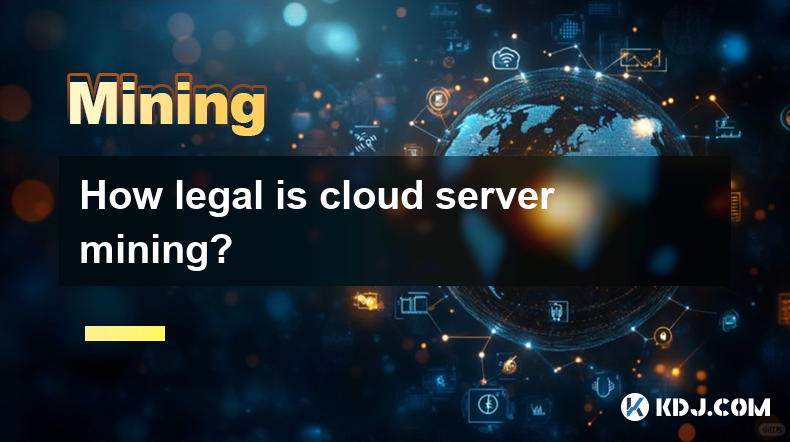
How legal is cloud server mining?
Apr 01,2025 at 08:08am
Cloud server mining has become an increasingly popular method for individuals and companies to participate in cryptocurrency mining without the need for expensive hardware and high electricity costs. However, the legality of cloud server mining can be a complex issue, as it varies by jurisdiction and depends on several factors. This article will explore...
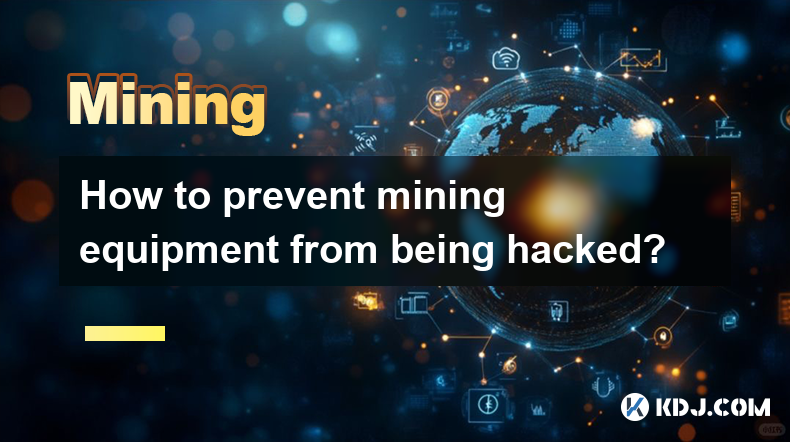
How to prevent mining equipment from being hacked?
Apr 01,2025 at 06:22am
Understanding the ThreatsCryptocurrency mining, while potentially lucrative, exposes your equipment to various cyber threats. These threats range from simple malware infections that steal your mining profits to sophisticated attacks that hijack your entire operation. Understanding these threats is the first step in effective protection. This includes r...
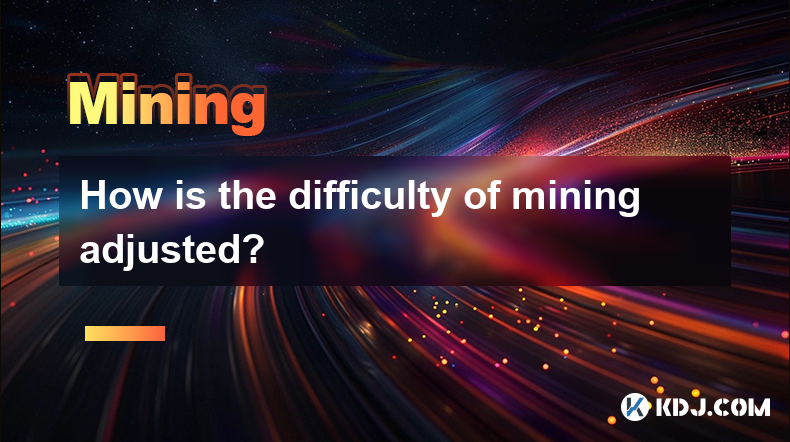
How is the difficulty of mining adjusted?
Apr 01,2025 at 07:14am
Understanding Bitcoin's Difficulty Adjustment MechanismBitcoin's mining difficulty is a crucial element ensuring the network's stability and security. It dynamically adjusts to maintain a consistent block generation time, approximately every 10 minutes. This adjustment prevents miners with overwhelming computing power from monopolizing block creation a...
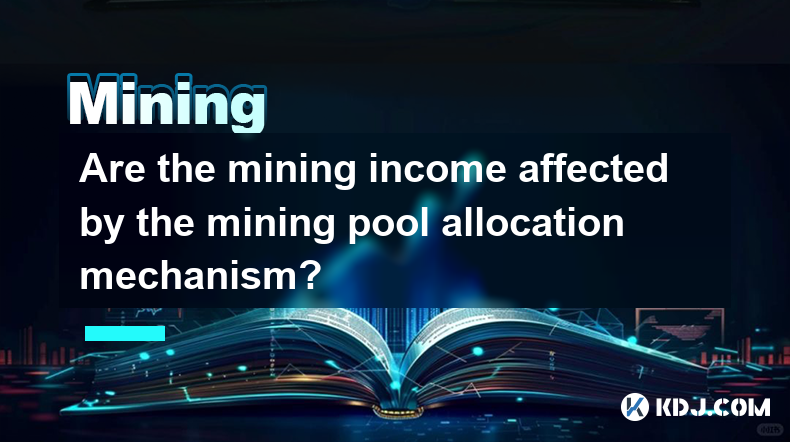
Are the mining income affected by the mining pool allocation mechanism?
Mar 31,2025 at 05:49pm
Understanding Mining Pool Allocation MechanismsMining pools aggregate the hashing power of many miners to increase the chances of successfully mining a block. The reward for successfully mining a block is then distributed among the pool's participants based on their contribution – usually measured in shares submitted. The allocation mechanism determine...

How does mining difficulty affect the profit?
Apr 01,2025 at 12:00pm
Understanding Mining Difficulty and its Impact on ProfitabilityMining difficulty in the context of cryptocurrencies refers to how computationally hard it is to solve the cryptographic puzzle required to add a new block to the blockchain. This difficulty is automatically adjusted by the network to maintain a consistent block time, typically around 10 mi...
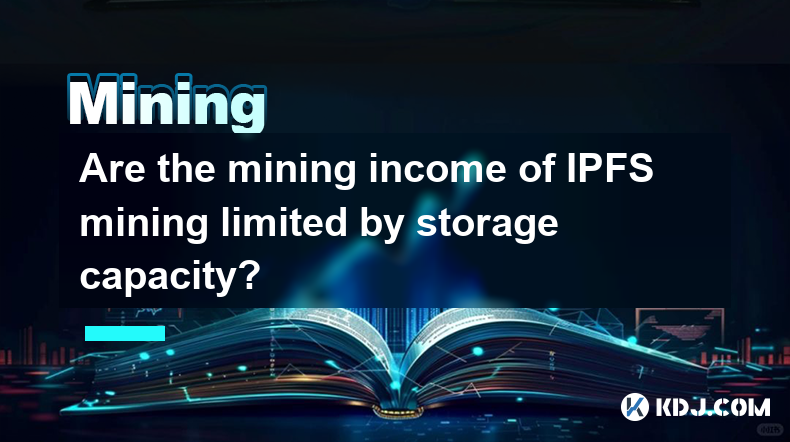
Are the mining income of IPFS mining limited by storage capacity?
Apr 01,2025 at 12:00am
Understanding IPFS Mining and its Revenue ModelIPFS (InterPlanetary File System) mining, unlike Bitcoin mining which relies on computational power, focuses on providing storage and bandwidth to the network. Miners earn rewards by making their storage available and contributing to the overall health and efficiency of the decentralized network. The amoun...

How legal is cloud server mining?
Apr 01,2025 at 08:08am
Cloud server mining has become an increasingly popular method for individuals and companies to participate in cryptocurrency mining without the need for expensive hardware and high electricity costs. However, the legality of cloud server mining can be a complex issue, as it varies by jurisdiction and depends on several factors. This article will explore...

How to prevent mining equipment from being hacked?
Apr 01,2025 at 06:22am
Understanding the ThreatsCryptocurrency mining, while potentially lucrative, exposes your equipment to various cyber threats. These threats range from simple malware infections that steal your mining profits to sophisticated attacks that hijack your entire operation. Understanding these threats is the first step in effective protection. This includes r...

How is the difficulty of mining adjusted?
Apr 01,2025 at 07:14am
Understanding Bitcoin's Difficulty Adjustment MechanismBitcoin's mining difficulty is a crucial element ensuring the network's stability and security. It dynamically adjusts to maintain a consistent block generation time, approximately every 10 minutes. This adjustment prevents miners with overwhelming computing power from monopolizing block creation a...

Are the mining income affected by the mining pool allocation mechanism?
Mar 31,2025 at 05:49pm
Understanding Mining Pool Allocation MechanismsMining pools aggregate the hashing power of many miners to increase the chances of successfully mining a block. The reward for successfully mining a block is then distributed among the pool's participants based on their contribution – usually measured in shares submitted. The allocation mechanism determine...

How does mining difficulty affect the profit?
Apr 01,2025 at 12:00pm
Understanding Mining Difficulty and its Impact on ProfitabilityMining difficulty in the context of cryptocurrencies refers to how computationally hard it is to solve the cryptographic puzzle required to add a new block to the blockchain. This difficulty is automatically adjusted by the network to maintain a consistent block time, typically around 10 mi...

Are the mining income of IPFS mining limited by storage capacity?
Apr 01,2025 at 12:00am
Understanding IPFS Mining and its Revenue ModelIPFS (InterPlanetary File System) mining, unlike Bitcoin mining which relies on computational power, focuses on providing storage and bandwidth to the network. Miners earn rewards by making their storage available and contributing to the overall health and efficiency of the decentralized network. The amoun...
See all articles























































































